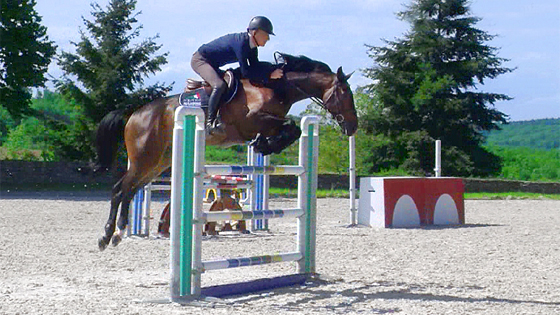Steadiness of the canter and control of the steering when jumping

The goal of this exercise is to control the horse’s shoulders and haunches on a grid while staying in the same canter rhythm throughout the set-up. The slight curve of the track makes it a bit more challenging...
The goal of this exercise is to control the horse’s shoulders and haunches on a grid while staying in the same canter rhythm throughout the set-up. The slight curve of the track makes it a bit more challenging as any drift towards the inside or outside of the curve will modify the distance between the fences compromising the steadiness of the canter.
The key, to be successful, lies in the rider’s aides which should stay light and discreet and surely not strong and restrictive as many riders would be tented to use.
Michel emphasizes on the importance of keeping the horse bent to the inside to improve the correctness of his motion and the use of his top-line.
This exercise is shown on the sheet OBS6 of the Training program 1
Michel teaches Sélène and her 7 year old horse, Amore. The rider learns that she needs to keep a relaxed position in harmony with the movement of her horse. The slightest tension can disturb her horse’s movements and prevent her from executing the exercise perfectly. The challenge is to give enough freedom to the horse while controlling the steering and the canter rhythm. A challenge that Sélène masters after a few tries. You will be able to get the feel for the ideal position just by watching the slow motion included in the video that you can, then, recreate when you will practise the exercise.
At the beginning, don’t hesitate to practise over ground poles only to set the correct reflexes before raising the bar.





